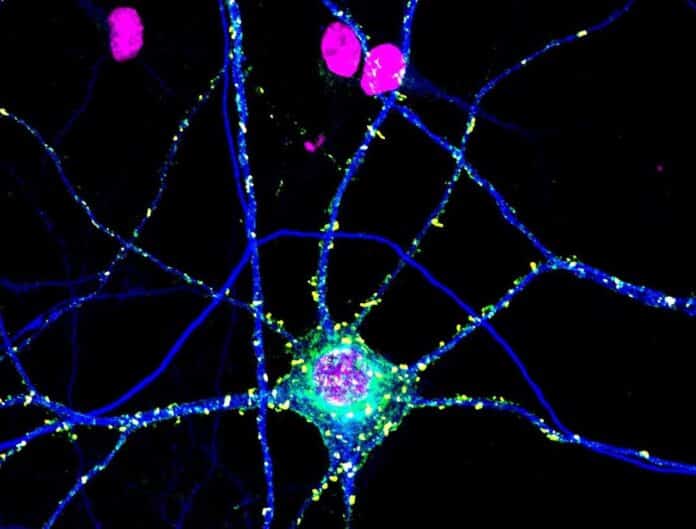A recent breakthrough in research has unveiled a significant discovery: two proteins in brain cells associated with the risk of developing schizophrenia interact physically. This interaction was observed in mice and has a direct impact on their motor skills, anxiety levels, and memory.
This finding has the potential to pave the way for innovative strategies in the treatment of schizophrenia. These proteins play a crucial role in maintaining typical behavior in mice. When this interaction is disrupted, it leads to increased hyperactivity, reduced risk avoidance, and impaired memory. Schizophrenia is known for its symptoms, like delusions and hallucinations, but it also involves issues related to movement and memory.
Lead author Chen Gu, associate professor of biological chemistry and pharmacology at The Ohio State University College of Medicine, said, “These two proteins are seemingly unrelated, and our study has provided a link between them that wasn’t recognized before.”
“There are more than 100 genes that have been identified as risk genes for schizophrenia, but we still don’t know the fundamental mechanisms behind those risks. “We’re hopeful that getting a better understanding of this mechanism could help in the long run to find a new treatment that could benefit patients with schizophrenia,” he added.
Prior studies pinpointed schizophrenia risk genes by examining protein dysfunction in post-mortem brain tissue. This study focuses on two proteins: MAP6, which supports a neuron’s cytoskeleton, specifically microtubules, and Kv3.1, which controls the maximum frequency of neuron signaling.
The researchers have a history of studying Kv3.1, especially in genetically altered mice missing this gene. When they noticed similar behavioral changes in mice lacking Kv3.1 and MAP6 genes, they decided to delve deeper into their relationship.
In this study, the researchers examined how the proteins’ interaction affects behavior by disrupting their ability to bind in specific brain regions: the hippocampus, linked to learning and memory, and the nearby amygdala, responsible for processing emotions.
The researchers discovered that when they disrupted the connection between these proteins in the amygdala, mice showed a reduced sense of risk avoidance, mainly regarding heights. Blocking the proteins’ interaction in the hippocampus led to hyperactivity and diminished recognition of familiar objects. Although some behaviors differed from those seen in mice completely lacking these genes, the study shed light on where these protein interactions, or their absence, have the most significant impact on behavior.
Dr. Gu explained, “Different brain regions control our daily activities, and our study advances this understanding. Previously, we only knew that global knockout mice had behavioral changes, but we didn’t pinpoint the responsible brain region.”
The next phase of their research will explore potential links between the proteins’ functions in the prefrontal cortex, a brain region critical for decision-making and planning, and social behavior in mice.
In a series of experiments in biochemistry and cell biology, the researchers uncovered how these proteins bind and influence their placement within neurons. They found that MAP6 helps stabilize the Kv3.1 channel in specific interneurons, which helps regulate brain signals. When MAP6 levels drop, Kv3.1 in these interneurons decreases significantly.
These discoveries suggest that when these proteins don’t bind correctly, there’s not enough Kv3.1 to maintain the signal control in interneurons. This imbalance in neural inhibition and excitation in specific brain regions can lead to adverse behavioral symptoms. Interneurons like these, capable of generating nerve impulses at high frequencies, are crucial in treating schizophrenia.
Dr. Gu explains, “Our study links MAP6 dysfunction to interneuron signal dysfunction, showing that these two proteins interact and influence each other. This opens up new possibilities for treatment.”
Funding for this research came from the National Institutes of Health. Additional co-authors include researchers from Ohio State and the Grenoble Institut Neurosciences in France.
The discovery of an unexpected connection between these two schizophrenia risk proteins has the potential to reshape our understanding of the disorder. It not only sheds light on the importance of these proteins in regulating behavior but also opens up promising avenues for the development of new treatment strategies for schizophrenia.
Journal reference:
- Ma, D., Sun, C., Manne, R., et al. A cytoskeleton-membrane interaction conserved in fast-spiking neurons controls movement, emotion, and memory. Molecular Psychiatry. DOI: 10.1038/s41380-023-02286-7.
